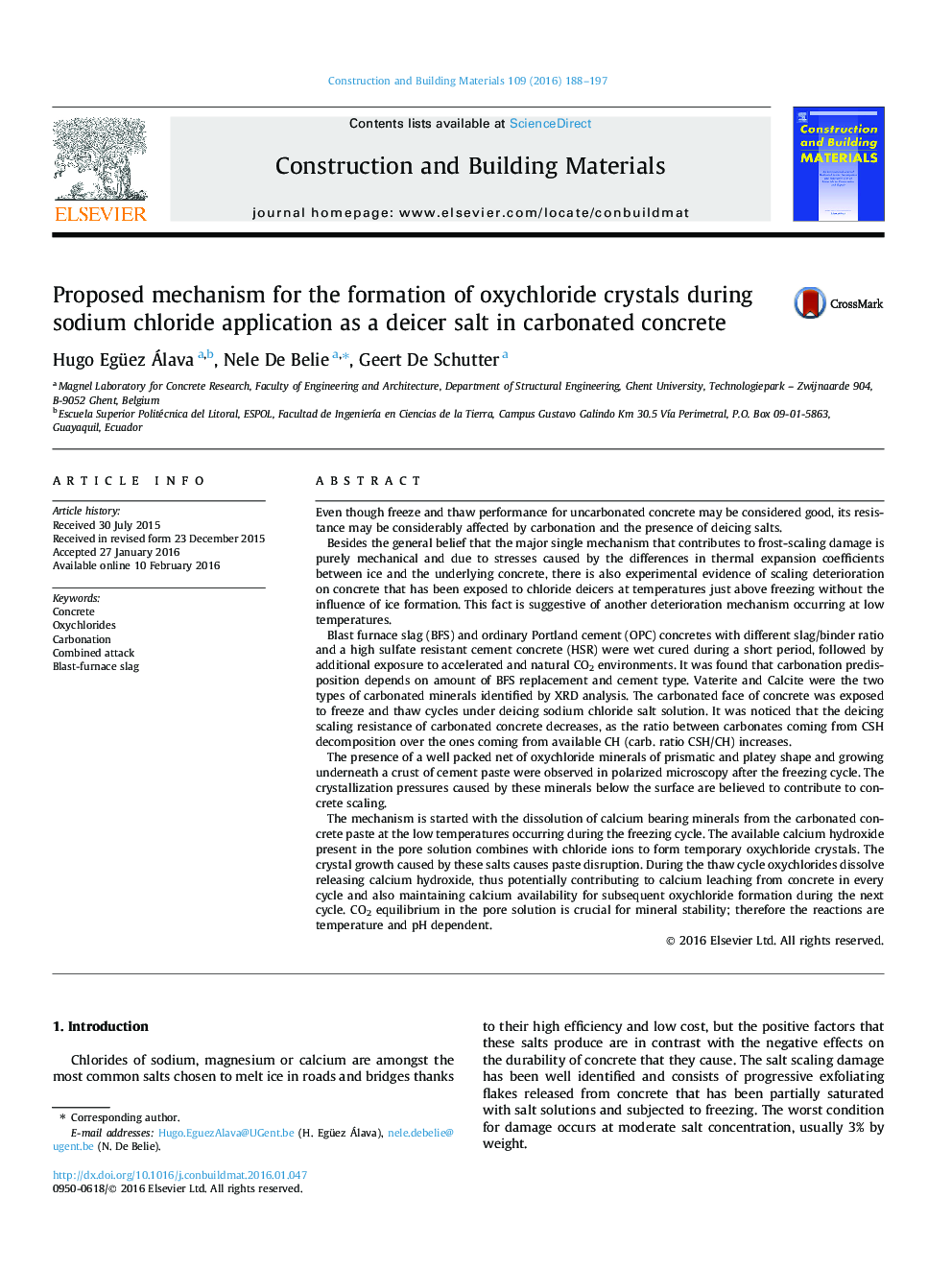| Article ID | Journal | Published Year | Pages | File Type |
|---|---|---|---|---|
| 256289 | Construction and Building Materials | 2016 | 10 Pages |
Even though freeze and thaw performance for uncarbonated concrete may be considered good, its resistance may be considerably affected by carbonation and the presence of deicing salts.Besides the general belief that the major single mechanism that contributes to frost-scaling damage is purely mechanical and due to stresses caused by the differences in thermal expansion coefficients between ice and the underlying concrete, there is also experimental evidence of scaling deterioration on concrete that has been exposed to chloride deicers at temperatures just above freezing without the influence of ice formation. This fact is suggestive of another deterioration mechanism occurring at low temperatures.Blast furnace slag (BFS) and ordinary Portland cement (OPC) concretes with different slag/binder ratio and a high sulfate resistant cement concrete (HSR) were wet cured during a short period, followed by additional exposure to accelerated and natural CO2 environments. It was found that carbonation predisposition depends on amount of BFS replacement and cement type. Vaterite and Calcite were the two types of carbonated minerals identified by XRD analysis. The carbonated face of concrete was exposed to freeze and thaw cycles under deicing sodium chloride salt solution. It was noticed that the deicing scaling resistance of carbonated concrete decreases, as the ratio between carbonates coming from CSH decomposition over the ones coming from available CH (carb. ratio CSH/CH) increases.The presence of a well packed net of oxychloride minerals of prismatic and platey shape and growing underneath a crust of cement paste were observed in polarized microscopy after the freezing cycle. The crystallization pressures caused by these minerals below the surface are believed to contribute to concrete scaling.The mechanism is started with the dissolution of calcium bearing minerals from the carbonated concrete paste at the low temperatures occurring during the freezing cycle. The available calcium hydroxide present in the pore solution combines with chloride ions to form temporary oxychloride crystals. The crystal growth caused by these salts causes paste disruption. During the thaw cycle oxychlorides dissolve releasing calcium hydroxide, thus potentially contributing to calcium leaching from concrete in every cycle and also maintaining calcium availability for subsequent oxychloride formation during the next cycle. CO2 equilibrium in the pore solution is crucial for mineral stability; therefore the reactions are temperature and pH dependent.
